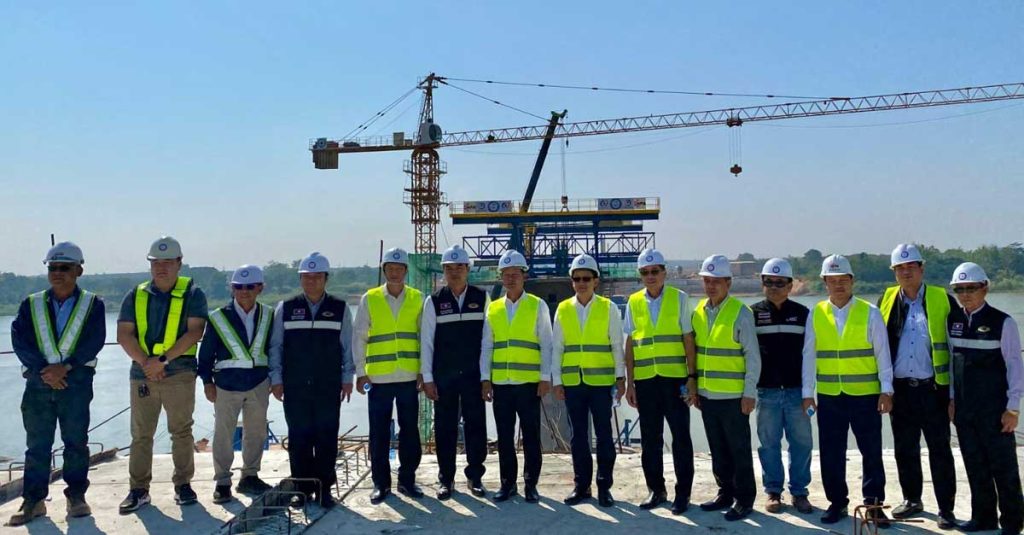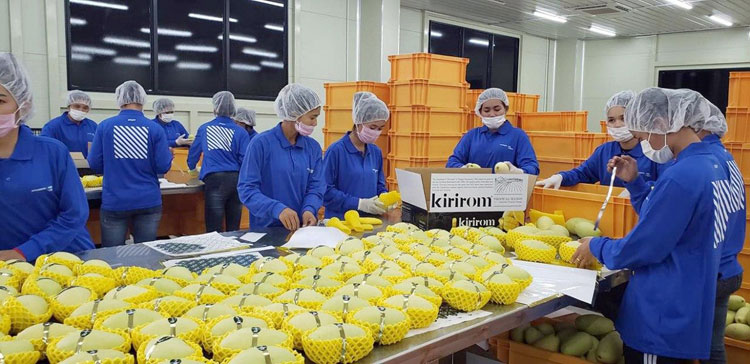Cambodia stands at the forefront of foreign direct investment (FDI) in Southeast Asia, anticipating a robust influx of capital in 2024, buoyed by a solid economic recovery.
The International Monetary Fund (IMF) projects the country’s growth to reach 6.1% next year, as highlighted in the annual FDI Standouts Watchlist from fDi Intelligence, the industry analysis division of Financial Times (FT) Group Ltd.
The report underscores that the study, evaluating the macroeconomic and FDI trends of the world’s top 50 FDI destinations using data from the IMF and fDi Markets, identifies countries poised to enter the new year with strong momentum, as the world continues to navigate an uneven post-pandemic recovery.
“Asia has performed admirably in this year’s Watchlist, with six countries in the top 10: Cambodia, leading the list, followed by the Philippines, Iraq, Kazakhstan, Azerbaijan and India. Only three African countries feature in the top 10: Kenya, Namibia and Morocco. Serbia is the sole country outside Asia and Africa to secure a spot in the top 10, ranking ninth,” stated the report.
Chea Vuthy, deputy secretary-general of the Cambodian Investment Board (CIB) and the Cambodian Special Economic Zone Board (CSEZB) at the Council for the Development of Cambodia (CDC), noted at a recent business forum that the country boasts economic potential, peace, security, and political and economic stability.
He emphasised the crucial role of the private sector in driving national economic development.
“We see that FDI annually approaches $4 billion. In 2020, ASEAN experienced a steep 40% decline, but our FDI remained stable at around $3.6 billion,” said Vuthy.
He added that Cambodian investors took the lead in the first half of the year, buoyed by confidence in the country’s investment climate and “trust in its leadership”.
To read full article, click here.
Author: May Kunmakara
Source: The Phnom Penh Post
Cambodia earned a gross revenue of $3.9 billion from the export of agricultural products in the first 11 months of 2023, said a Ministry of Agriculture, Forestry and Fisheries (MAFF) report on Tuesday.
The Southeast Asian country shipped 7.31 million tons of agricultural products to 75 countries and regions during the January-November period this year, a year-on-year drop of 4.6 percent, the report said.
Key agricultural items for exports included rice, rubber, cassava, mangoes, fresh bananas, pepper, cashew nuts, longan, and corn, palm oil, among others.
“Despite a slight drop in the commodity export in the first 11 months of this year, we’re optimistic that the growth will rebound soon because our export in November had seen a significant increase,” Ngin Chhay, director-general of the MAFF’s General Directorate of Agriculture, said in the report.
He added that the kingdom exported 1.03 million tons of agricultural products in November this year, up almost 50 percent from 0.69 million ton in the same month last year.
China, Vietnam and Thailand are the major importers of Cambodia’s agricultural items.
For authentic article, please visit here.
Author: Xinhua
Source: Khmer Times
AMID a global funding winter, fintech investors in South-east Asia are concentrating the limited funds they are willing to cough up in early-stage startups and alternative lending.
Fintech funding in the region – or more precisely, the six largest Asean economies of Singapore, Indonesia, the Philippines, Vietnam, Thailand and Malaysia – has fallen by 70 per cent for the year to Sep 30, 2023, said a report by UOB, PwC Singapore and the Singapore FinTech Association released on Thursday (Nov 16).
The report, based on data from Tracxn’s platform, said early-stage companies received half the total fintech funding of US$1.3 billion, which went to six of the top 10 funded companies in the first nine months of 2023.
Investors surveyed in the report said that, for them, the key attractions in this space were the new ideas being explored by these early-stage startups, and the smaller capital outlays being sought.
The average fintech deal size stood at US$13.5 million for 9M 2023, down from US$21.8 million for 2022. For comparison, the average deal size in 2019, before the Covid pandemic, was US$9 million.
Shadab Taiyabi, president of the Singapore FinTech Association, said: “While the landscape for fintech funding across the region has certainly been trickier to navigate, it is good to see Singapore retain its (2022) position as the region’s most vibrant destination, attracting the highest number of deals.”
A total of 51 deals were inked in Singapore, comprising 54 per cent of total deal volume of 94 logged for the six Asean economies. In terms of deal value, Singapore bagged 59 per cent, or US$747 million.
Among the nine categories of fintechs surveyed in the report, alternative lending led funding numbers across those six economies for the first time. This form of lending, which includes online lending and crowdfunding, attracted US$408 million, or 32 per cent of total fintech investments – a 22 percentage point increase from 2022.
Insurtech came in second at 25 per cent or US$325 million, increasing by 20 percentage points from 2022. In third place was payments, at 15 per cent or US$186 million, down 24 percentage points from 2022.
By deal volume, the cryptocurrency sector ranked first. However, its share of funding fell 10 percentage points from 21 per cent in 2022 to 11 per cent in 9M 2023, as investors avoided overvaluing the sector.
The fintech slump in the six Asean economies in 9M 2023 mirrors the global one. Fintech funding globally fell to US$43.5 billion as high interest rates and an uncertain economic environment crimped investor appetite. The decline follows the US$163 billion raised in 2021 and the US$107 billion in 2022.
Source: The Business Times. Link: Here.
























